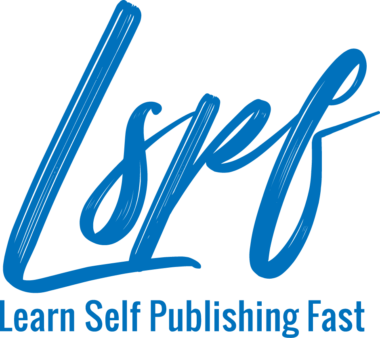Being a co-author and writing a book with another writer can be lucrative, especially in this market where producing books quickly is one of the methods to keep your career going and your book sales high. But if you thought writing a book by yourself is hard, try writing one with someone else.

Do you have your own process for writing books? Probably. Most of us do. Imagine merging that with someone else who is just as committed to their process as you are to yours.
I’ve been part of several collaborations and have learned a lot from each one. In order to save you some of the trouble of messy collaborations, I’ve put together some tips for you.
It’s important to be extremely clear on expectations going into the project. Sometimes this is tough because ideas and opinions change along the way, concepts that it is impossible to be completely prepared for. But the more details you work out before you get into the depths of plot and characterization (the fun stuff), the easier it will be.
Start with official legal/admin type questions at first and make sure you can agree on these points before you get into the nitty gritty of the story. After all, for a lot of us, the fun and new energy of a story can carry us for awhile and we can forget to look at the hard stuff. So set your idea aside for a moment and decide:
1) Whose social security number will you publish under? Keep in mind that if you pay out more than $600 to any author on the project, you’ll be responsible for issuing that author(s) a 1099 come tax time (in the US). Taking point on the financial stuff adds another level of complexity to make sure you’ve thought it all out.
2) What kind of budget will you have for marketing?
3) How will you handle the profits? Will you reinvest everything you make back into marketing? Or will you pay out a percentage of royalties after a certain amount or past a certain date?
4) Who will be responsible for hiring a book cover designer? Do you have a set budget for that?
5) What will your editing process be like? Do you agree on what edits will need to occur? For example, you might be used to using a beta reader and then a copy editor but your partner might be used to paying for a full developmental edit, in addition to copyediting.
6) What about formatting? Once that book is written, it needs to be formatted for ebook, paperback, and possibly audio. Who will be in charge of what? Have you agreed on where you’ll publish it? And whether each individual author (if you are writing an anthology) will be able to publish their stories separately?
These questions can be answered as you go, but if you address these issues ahead of time and put them into a written contract signed by all participating authors, you will be glad you did. There’s nothing worse than being halfway through a collaboration and realizing that you don’t agree on how to edit or who to edit, who is going to pay for the book cover, formatting, etc. Work this out ahead of time. Trust. Me.
Who Is In Charge? Is There a Tie-Breaker?
Is this story world one that you came up with and are simply inviting others to participate or are you building the world together? Is there a point-person in charge of making final decisions (creative, financial, or otherwise) on the project? You will want to have that nailed down before you begin, because there will be questions and ideas about things you want to change or add to the world. If you have created a world where there are no humans and the only living things are marshmallow monsters, as an example, when an author participating in the project decides that they must absolutely have a human girl in their story, you’ll have a process to determine if that will be allowed and a final decision maker. This process and the author with the tie breaking vote should be identified before you begin or there will be chaos. I. Promise.
Decide On The Details of the Collaboration
What genre is the project? How long will the book be? What publication date are you shooting for? When is the deadline for each author’s particular submissions. Do you have a formula that you’ll use for an outline? Do you even outline? Writing by the seat of your pants can be pretty tough when you are collaborating with another author on a single story. My advice is that you will need some sort of outline, even if it’s only a loose one. You’ll want to work on the outline with your co-author, agree on it, agree what process you’ll use if one of you wants to make a change. Because one of you will want to make a change. Pinky. Swear.
Decide on a Writing Process
Once you know what you are going to write, decide how you’ll share your writing with each other. This includes what software you’ll write in. If one of you writes in Word and the other in Pages, be sure you are exporting your files into formats the other can read. You can create a Scrivener file and share it in Dropbox, for example, but I found that sometimes data gets lost. We need up sharing Pages files in a private Facebook that only we can see. You could use Google Docs. There are tons of options, just agree on one and then stick with it, if possible. Decide who is writing what. If your book is outlined to have 12 chapters, decide ahead of time who is writing which chapter and when they are due. This will make your process much simpler. My co-author, Amanda A. Allen and I, had to figure out a lot of this as we went and we were fortunate to like each other at the beginning and still at the end. In fact, we are working on our 5th collaboration, Paris Murder, launching February 15. We have such a love affair with writing and with each other that we find ways to get through our disagreements and preserve our relationship. It doesn’t always go this way, though, so if you want to keep a friend or a professional colleague, line up you details ahead of time. And then be prepared to be flexible as real life gets ahold of you both. Life will mess with you. I. Guarantee. It.
I’ll give you an example of the way Amanda and I do it. If we are writing a 12 chapter mystery, we start with an outline based on a mystery template that we like to use. We determine who the bad guy is, who the suspects are, what the clues are and what information will go in each chapter. Then we assign who is going to write each chapter. In our Inept Witches Mystery series, we write from two different characters point of views. Amanda writes Ingrid and I write Emily. This is an easy way to make sure we don’t have “voice” issues. You can choose to write a book with another author that has only one POV but you’ll need to dedicate an entire pass of editing on making sure your voice sounds consistent throughout the book. When our process works perfectly, Amanda will write a chapter, I’ll come behind and write chapter 2, building on some details she included in her chapter, and then she leap frogs and writes chapter 3, and so on. However, since we have each chapter outline, she doesn’t have to wait for me to write her chapters. She can skip ahead and write all of her chapters when she has time because she knows exactly which details need to be included in a particular chapter. We typically break our books down into 4 parts, partially borrowing from the Story Engineering concept from Larry Brooks. Once we have Chapters 1-3 written, we combine that into one document called Part 1. We do that until we have all four sections of the book. Then we edit, with track changes, one section at a time. So she might start reading/editing Part 1 and then when she moves into Part 2, I open up Part 1 and pass through that part of the manuscript again, addressing any changes she might have suggested or questions she might have. We move like this through all four sections of the book before we send the manuscript off to beta readers and then editors.
Collaboration is one of the hardest and most amazing projects I’ve been involved with as an indie author. I’m glad to know what I know and the process has gotten simpler. Final tips for you: Be prepared to be flexible. Even making all these decisions ahead of time, you’ll still encounter points of disagreement. Be kind to each other and decide now if it’s more important that the project turn out just how you like or that you are willing to compromise to preserve the relationship with your co-author. And don’t forget to speak up. If there is something that is important to you whether it is in story building, publishing details, or marketing strategy, be sure to use your (nice) voice early and often.


Comments